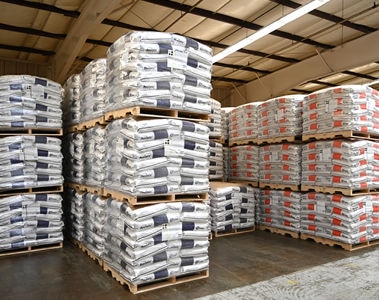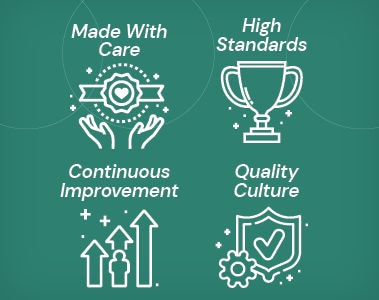The animal premix manufacturing industry plays a vital role in ensuring that all animals receive the essential nutrients necessary for their health and productivity. To maintain a high standard of quality and meet the evolving needs of customers, dsm-firmenich is harnessing the power of continuous improvement. This approach allows us to refine processes, enhance product quality, and solidify our position as leaders in the industry.
dsm-firmenich's adoption of continuous improvement has yielded remarkable results. By identifying and addressing quality control challenges systematically, we’ve achieved several notable outcomes:
- Reduced Defects: dsm-firmenich has significantly reduced the number of defects and variations in its products, ensuring that customers receive consistently high-quality nutrition and flavor solutions.
- Enhanced Customer Satisfaction: The company's commitment to quality has translated into improved customer satisfaction, fostering trust and loyalty among its clientele.
- Streamlined Processes: Continuous improvement has helped dsm-firmenich streamline its quality control processes, leading to increased operational efficiency and reduced costs.
- Compliance and Innovation: By addressing regulatory compliance issues through continuous improvement, dsm-firmenich has not only met industry standards but also continued to innovate in the ever-evolving nutrition sector.
Here's a closer look at how continuous improvement is being applied to achieve our Quality objectives:
- Identify Improvement Opportunities
The journey towards enhanced quality control begins with a clear definition of the problem or objective. This involves understanding customer expectations, regulatory requirements, and internal quality standards. To accomplish this, dsm-firmenich employs a range of data collection tools, such as customer feedback, statistical process data, and key performance indicators (KPIs). Collecting this data provides valuable insights into the scope of the issue and helps identify areas that can be improved.
- Root Cause Analysis (RCA)
Once data is gathered, the next step is to identify the root cause of the issue. A comprehensive cause-and-effect root cause analysis is performed to identify one or more possible causes to the issue. This in-depth examination helps pinpoint the underlying issues that need to be addressed and create an action plan to improve.
- Implementing Solutions
With a clear understanding of the problem's root causes, we move on to the improvement phase. Here, we will devise and implement a Corrective action and preventative action (CAPA) plan to optimize quality control processes. These solutions may involve process redesign, staff training, technology upgrades, or the introduction of new quality control methods. The aim is to eliminate defects, enhance efficiency, and ensure consistent quality for our customers.
- Sustaining Quality Excellence
Sustainability is key to any quality improvement initiative. dsm-firmenich establishes control measures to ensure that the improvements achieved during the implementation of our corrective and preventative actions are maintained over time. This includes ongoing monitoring, regular audits, and the development of standard operating procedures to keep quality control on track.
In the competitive landscape of animal premix manufacturing, continuous improvement is the cornerstone of quality enhancement. By systematically reviewing and enhancing production processes, maintaining rigorous quality control, and staying attuned to customer needs and industry trends, dsm-firmenich is elevating the quality of our products. As the industry evolves, those who embrace this approach will thrive as leaders in delivering top-quality animal premixes to meet the ever-changing demands of the feed industry.



